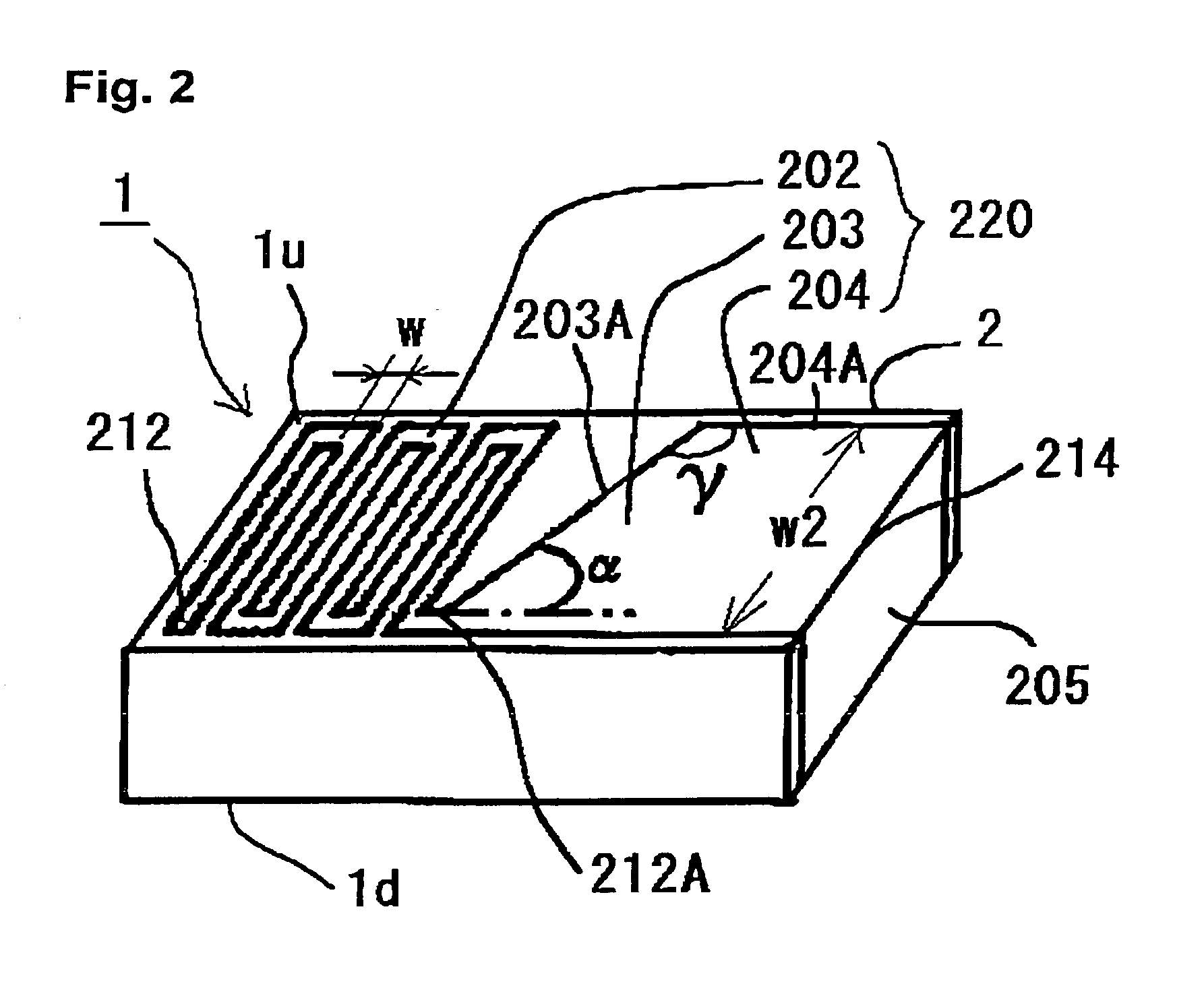Dielectric antenna for high frequency wireless communication apparatus
a high-frequency wireless communication and dielectric antenna technology, applied in the direction of antenna details, antennas, electrically long antennas, etc., can solve the problems of deteriorating radio wave radiation characteristics, affecting the efficiency of radio wave radiation transmission, and consuming or occupying substantial space, so as to achieve efficient and economic prevention of a drop in the efficiency of radio wave radiation, and the effect of eliminating impedance mismatch
- Summary
- Abstract
- Description
- Claims
- Application Information
AI Technical Summary
Benefits of technology
Problems solved by technology
Method used
Image
Examples
Embodiment Construction
[0031]An embodiment according to a first aspect of the invention will be explained with reference to the drawings, and in particular, in relation to FIG. 1.
[0032]Referring to FIG. 1, a dielectric antenna 1 includes a dielectric substrate 2 typically made of alumina ceramic and having a rectangular solid shape, and a conductor portion 220 typically formed of Ag baked on one of the main surfaces 1u of the dielectric substrate 2. The conductive portion 220 comprises a conductive meander line layer or element 202, and a conductive feed line layer or element 204 and a conductive taper layer or element 203. The taper layer 203 connects one end of the meander line layer 202 to the feed line layer 204, and has an edge 203A thereof which is slanted with respect to, i.e., is inclined an angle to, an adjoining edge 204A of the feed line layer 204 in a direction toward the meander line layer 202. An angle γ of 110°–175°, and more preferably 120°–170°, is formed between the edges. The other end ...
PUM
 Login to View More
Login to View More Abstract
Description
Claims
Application Information
 Login to View More
Login to View More - R&D
- Intellectual Property
- Life Sciences
- Materials
- Tech Scout
- Unparalleled Data Quality
- Higher Quality Content
- 60% Fewer Hallucinations
Browse by: Latest US Patents, China's latest patents, Technical Efficacy Thesaurus, Application Domain, Technology Topic, Popular Technical Reports.
© 2025 PatSnap. All rights reserved.Legal|Privacy policy|Modern Slavery Act Transparency Statement|Sitemap|About US| Contact US: help@patsnap.com



